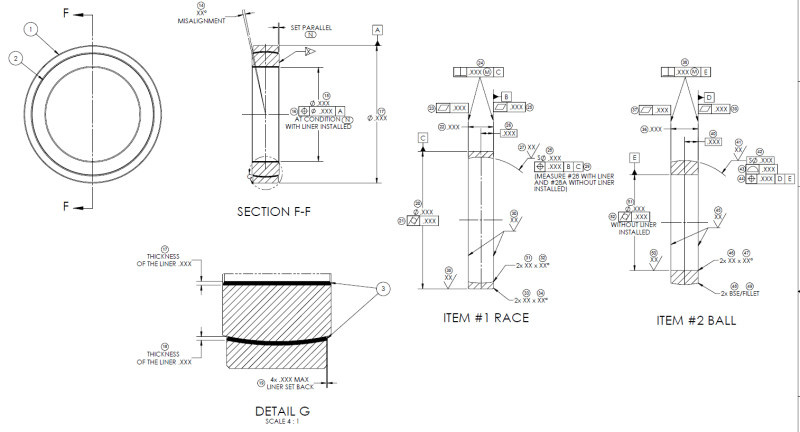Nescius,
You are not speaking loosely, you are speaking precisely. In addition, if a secondary datum feature is referenced and a basic dimension locates the "anchor point" along the axis, the concentricity tolerance zone is fixed relative to the DRF.
pmarc,
I will not deny that the intent of those writing the standard might have been that concentricity of a spherical feature is only evaluated relative to a datum center point established from another spherical feature. This could be the intent, but they didn't make it explicit. Since they didn't, I would not rule out the option of concentricity specification for a spherical feature relative to a primary datum axis and a secondary datum plane based on a guess of what the intent of the committee was. That is, if evaluation of median points within a tolerance zone that doesn't coincide with a datum point but is basically defined relative to the DRF truly suits the design intent, and the vendor understands the requirement (although we all have good reasons to doubt it).
BTW, I think that not only that the committee didn't make what you think they intend explicit, the paragraphs we quoted are badly formed. I don't understand the use of parenthesis such as in "(or spherical)" and "(or center point)" - if it's part of the definition and not for clarification only, there should have been no parenthesis.
rollingcloud, admittedly I didn't look at your latest attachment yet, but based on what you ask, I can offer you a clarification regarding the type of the "horizontal .XXX dimension" - it MUST be basic in order to locate the center of a tolerance zone related to a geometric tolerance requirement relative to a datum/datum reference frame. If it is basic, there are no clarification notes required.
Regardless, I suggest you again to consider keeping the original scheme with the combination of position and profile.

